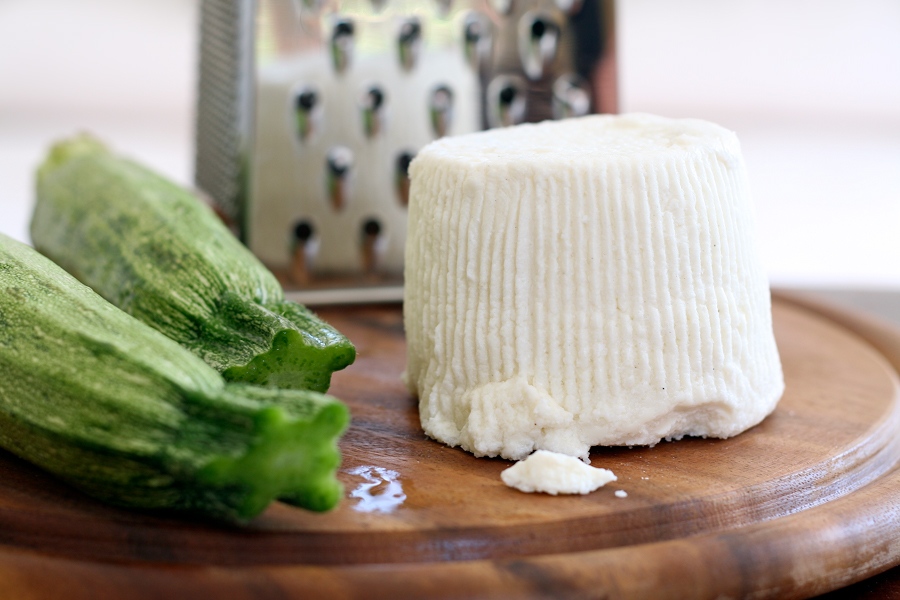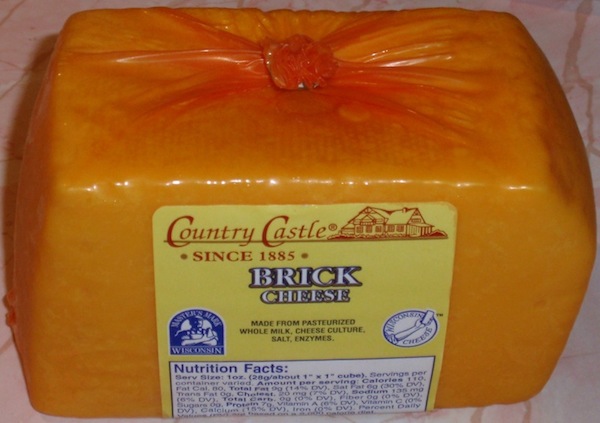|
Pizza Cheese
Pizza cheese encompasses several varieties and types of cheeses and dairy products that are designed and manufactured for use specifically on pizza. These include processed and modified cheese, such as mozzarella-like processed cheeses and mozzarella variants. The term can also refer to any type of cheese suitable for use on pizza. The most popular cheeses used in the preparation of pizza are mozzarella (accounting for about 30%), provolone, cheddar and Parmesan. Emmental, ''pecorino romano'' and ricotta are often used as toppings, and processed pizza cheeses manufactured specifically for pizza are mass-produced. Some mass-produced pizza cheeses are frozen after manufacturing and shipped frozen. Processed pizza cheese is manufactured to produce optimal qualities in browning, melting, stretchiness and fat and moisture content. Several studies and experiments have analyzed the impact of vegetable oil, manufacturing and culture processes, denatured whey proteins and other ch ... [...More Info...] [...Related Items...] OR: [Wikipedia] [Google] [Baidu] |
Provel
Provel ( ) is a white processed cheese prominent in Cuisine of St. Louis, St. Louis cuisine. A combination of Cheddar cheese, cheddar, Swiss cheese (North America), Swiss, provolone, and liquid smoke, Provel has a low melting point, a gooey texture, and a buttery flavor. Provel cheese is the traditional cheese used for St. Louis–style pizza. It is also used in pasta sauces, cheese soup, salads, and sandwiches such as the Gerber sandwich. Provel is rarely used or sold outside of St. Louis. Provel can be purchased at St. Louis-area grocery stores such as Schnucks or Dierbergs Markets, and Hy-Vee grocery stores across the Midwest. History Provel was purportedly invented for St. Louis–style pizza in the 1940s by Costa Grocery (now Roma Grocery on The Hill, St. Louis, the Hill), in collaboration with Hoffman Dairy of Wisconsin (now part of Kraft Foods), according to ''St. Louis Post-Dispatch'' food writer Joe Bonwich. Provel was developed to meet demand for a pizza cheese with ... [...More Info...] [...Related Items...] OR: [Wikipedia] [Google] [Baidu] |
Pasteurization
In food processing, pasteurization (American and British English spelling differences#-ise, -ize (-isation, -ization), also pasteurisation) is a process of food preservation in which packaged foods (e.g., milk and fruit juices) are treated with mild heat, usually to less than , to eliminate pathogens and extend shelf life. Pasteurization either destroys or deactivates microorganisms and enzymes that contribute to food spoilage or the risk of disease, including vegetative bacteria, but most Endospore, bacterial spores survive the process. Pasteurization is named after the French microbiologist Louis Pasteur, whose research in the 1860s demonstrated that thermal processing would deactivate unwanted microorganisms in wine. Spoilage enzymes are also inactivated during pasteurization. Today, pasteurization is used widely in the dairy industry and other food processing industries for food preservation and food safety. By the year 1999, most liquid products were heat treated in a co ... [...More Info...] [...Related Items...] OR: [Wikipedia] [Google] [Baidu] |
Pizza Cheese
Pizza cheese encompasses several varieties and types of cheeses and dairy products that are designed and manufactured for use specifically on pizza. These include processed and modified cheese, such as mozzarella-like processed cheeses and mozzarella variants. The term can also refer to any type of cheese suitable for use on pizza. The most popular cheeses used in the preparation of pizza are mozzarella (accounting for about 30%), provolone, cheddar and Parmesan. Emmental, ''pecorino romano'' and ricotta are often used as toppings, and processed pizza cheeses manufactured specifically for pizza are mass-produced. Some mass-produced pizza cheeses are frozen after manufacturing and shipped frozen. Processed pizza cheese is manufactured to produce optimal qualities in browning, melting, stretchiness and fat and moisture content. Several studies and experiments have analyzed the impact of vegetable oil, manufacturing and culture processes, denatured whey proteins and other ch ... [...More Info...] [...Related Items...] OR: [Wikipedia] [Google] [Baidu] |
Calzone
Calzone is an Italian oven-baked folded pizza. A typical calzone is made from salted bread dough, baked in an oven and stuffed with prosciutto or salami, mozzarella or ricotta, and Parmesan or pecorino, as well as an egg. Different regional variations in or on a calzone can often include other ingredients that are normally associated with pizza toppings. The term usually applies to an oven-baked turnover rather than a fried pastry (i.e. panzerotti), although calzones and panzerotti are often mistaken for each other. Stromboli, an Italian-American pizza turnover, is similar to calzone, and the two are sometimes confused. Unlike strombolis, which are generally rolled or folded into a cylindrical or rectangular shape, calzones are always folded into a crescent shape, and typically do not contain tomato sauce inside. In Italy Sandwich-sized calzones are often sold at Italian lunch counters or by street vendors, because they are easy to eat while standing or walking. Frie ... [...More Info...] [...Related Items...] OR: [Wikipedia] [Google] [Baidu] |
Ricotta
Ricotta () is an Italian whey cheese made from sheep, cow, goat, or Italian water buffalo milk whey left over from the production of other cheeses. Like other whey cheeses, it is made by coagulating the proteins that remain after the casein has been used to make cheese, notably albumin and globulin. Ricotta () protein can be harvested if the whey is first allowed to become more acidic by additional fermentation (by letting it sit for 12–24 hours at room temperature). Then the acidified whey is heated to near boiling. The combination of low pH and high temperature denatures the protein and causes it to flocculate, forming a fine curd. Once cooled, it is separated by passing the liquid through a fine cloth, leaving the curd behind. Ricotta curds are creamy white in appearance, and slightly sweet in taste. The fat content varies depending on the milk used. In this form, it is somewhat similar in texture to some fresh cheese variants, though considerably lighter. It is hi ... [...More Info...] [...Related Items...] OR: [Wikipedia] [Google] [Baidu] |
Serious Eats
Serious Eats is a website and blog focused on food enthusiasts, created by food critic and author Ed Levine. A Serious Eats book was published by Levine in 2011. Serious Eats was acquired by Fexy Media in 2015 and then by Dotdash in late 2020. Content The site consists of general food features as well as recipes, home cooking advice, and equipment reviews. The site is notable for launching the career of J. Kenji Lopez-Alt, whose column "The Food Lab" was adapted into a James Beard award-winning cookbook of the same name. Lopez-Alt's writing was highly regarded among amateur cooks for its rigorous approach to cooking and recreating cultural food icons, such as the ShackBurger and Chick-fil-a, in the home kitchen. Critical reception In 2008, Serious Eats was ranked #17 on ''Time'' magazine's list of the 50 Best Websites. Serious Eats was the recipient of two James Beard Foundation awards in 2010 for Best Food Blog and Best Video Webcast. See also * List of websites about foo ... [...More Info...] [...Related Items...] OR: [Wikipedia] [Google] [Baidu] |
Brick Cheese
Brick cheese is a cheese originating in Wisconsin, United States, made in brick-shaped form due to (originally) using actual bricks to form the shape. The color ranges from pale yellow to white with an orange rind. When unaged, this cheese has a sweet, mild flavor and is suitable for melting; after aging it has a stronger smell and a nuttier taste. Origins Brick cheese was originally produced in Wisconsin beginning in 1877. The cheese-making process was derived from white American Cheddar that is cultured at a slightly higher temperature, which results in a marginally higher fat content and a slightly altered protein structure. The resultant "brick cheese" has a slightly softer texture. Culturing '' Brevibacterium linens'' grows on the surface of brick cheese, making it surface-ripened. ''Brevibacterium linens'' is also the bacterium responsible for the aging of Limburger cheese and many French cheese varieties. Cheesemakers often refer to the growth of the bacteria as a ' ... [...More Info...] [...Related Items...] OR: [Wikipedia] [Google] [Baidu] |
Detroit-style Pizza
Detroit-style pizza is a rectangular pan pizza with a thick, crisp, chewy crust. It is traditionally topped to the edges with mozzarella or Wisconsin brick cheese, which caramelizes against the high-sided heavyweight rectangular pan. Detroit-style pizza was originally baked in rectangular steel trays designed for use as automotive drip pans or to hold small industrial parts in factories. It was developed during the mid-20th century in Detroit, Michigan, before spreading to other parts of the United States in the 2010s. It is one of Detroit's most famous local foods. Description Detroit-style pizza is a rectangular pizza topped with Wisconsin brick cheese and a cooked tomato-based sauce. The dough typically has a hydration level of 70 percent or higher, which creates an open, porous, chewy crust with a crisp exterior. The fresh dough is double-proofed and stretched by hand to the pan corners. When seasoning new steel pans, they usually need to be dry-baked using of do ... [...More Info...] [...Related Items...] OR: [Wikipedia] [Google] [Baidu] |
Parmigiano-Reggiano
Parmesan (, ) is an Italian hard, granular cheese produced from cow's milk and aged at least 12 months. It is a grana-type cheese, along with Grana Padano, the historic , and others. The term ''Parmesan'' may refer to either Parmigiano Reggiano or, when outside the European Union and Lisbon Agreement countries, a locally produced imitation. Parmigiano Reggiano is named after two of the areas which produce it, the Italian provinces of Parma and Reggio Emilia (''Parmigiano'' is the Italian adjective for the city and province of Parma and ''Reggiano'' is the adjective for the province of Reggio Emilia); it is also produced in the part of Bologna west of the River Reno and in Modena (all of the above being located in the Emilia-Romagna region), as well as in the part of Mantua (Lombardy) on the south bank of the River Po. The names ''Parmigiano Reggiano'' and ''Parmesan'' are protected designations of origin (PDO) for cheeses produced in these provinces under Italian and ... [...More Info...] [...Related Items...] OR: [Wikipedia] [Google] [Baidu] |
Decomposition
Decomposition is the process by which dead organic substances are broken down into simpler organic or inorganic matter such as carbon dioxide, water, simple sugars and mineral salts. The process is a part of the nutrient cycle and is essential for recycling the finite matter that occupies physical space in the biosphere. Bodies of living organisms begin to decompose shortly after death. Although no two organisms decompose in the same way, they all undergo the same sequential stages of decomposition. Decomposition can be a gradual process for organisms that have extended periods of dormancy. One can differentiate ''abiotic'' decomposition from ''biotic'' decomposition ( biodegradation); the former means "the degradation of a substance by chemical or physical processes", e.g., hydrolysis; the latter means "the metabolic breakdown of materials into simpler components by living organisms", typically by microorganisms. Animals, such as earthworms, also help decompose the organ ... [...More Info...] [...Related Items...] OR: [Wikipedia] [Google] [Baidu] |
Food Rheology
Food rheology is the study of the rheological properties of food, that is, the consistency and flow of food under tightly specified conditions. The consistency, degree of fluidity, and other mechanical properties are important in understanding how long food can be stored, how stable it will remain, and in determining food texture. The acceptability of food products to the consumer is often determined by food texture, such as how spreadable and creamy a food product is. Food rheology is important in quality control during food manufacture and processing. Food rheology terms have been noted since ancient times. In ancient Egypt, bakers judged the consistency of dough by rolling it in their hands. Overview There is a large body of literature on food rheology because the study of food rheology entails unique factors beyond an understanding of the basic rheological dynamics of the flow and deformation of matter. Food can be classified according to its rheological state &ndash ... [...More Info...] [...Related Items...] OR: [Wikipedia] [Google] [Baidu] |








